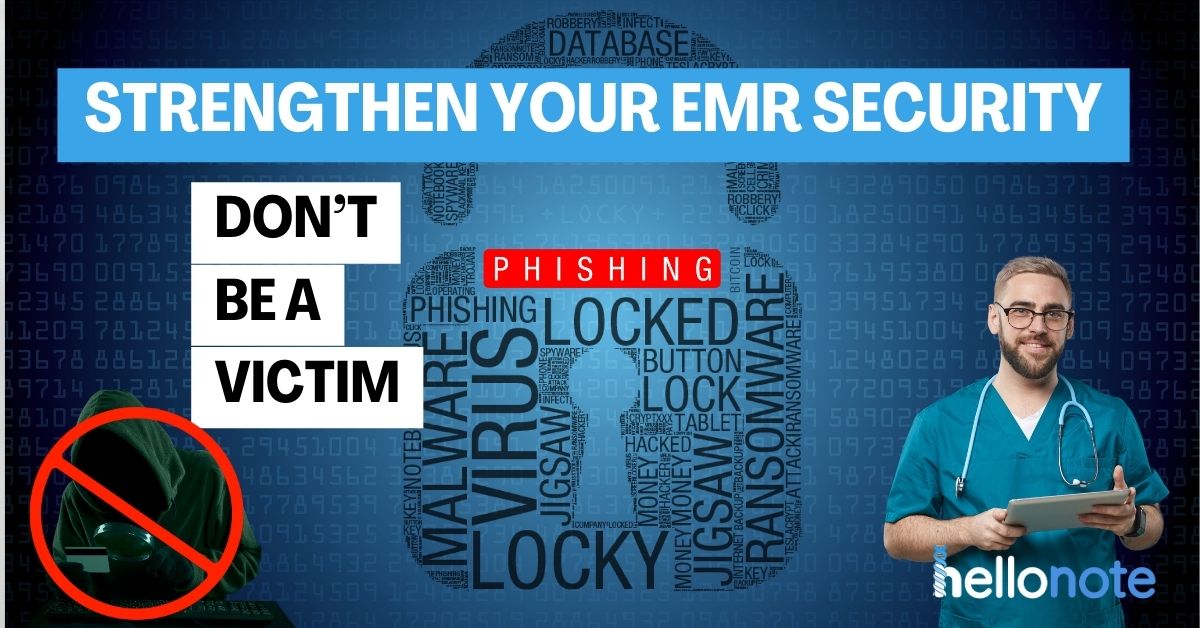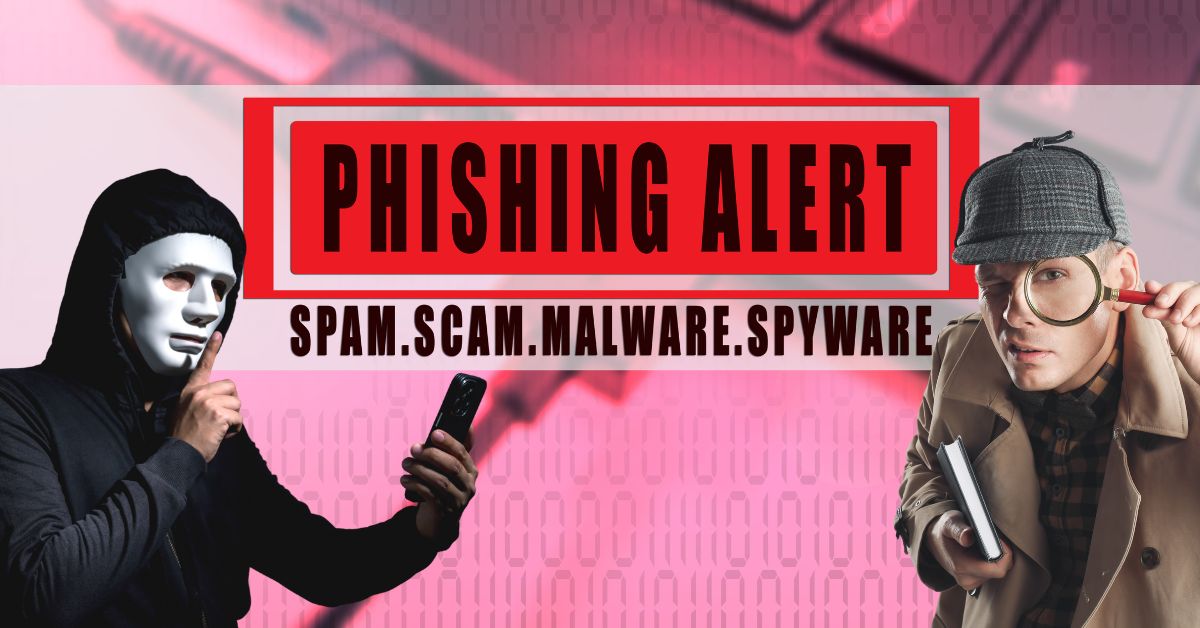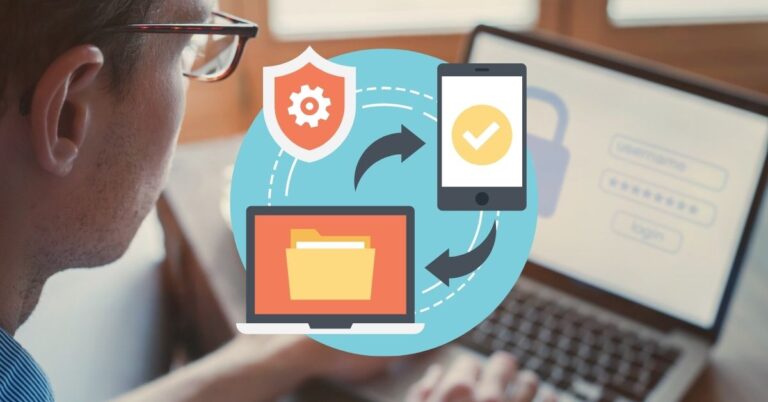Top 15 Strategies for Therapists to Prevent Phishing – Strengthen Your EMR Security
Protect your therapy practice from phishing scams with actionable tips and explore HelloNote EMR's robust features for enhanced security and efficiency

As a therapist, you rely on Electronic Medical Records (EMRs) to keep your practice running smoothly and your patient data secure. However, phishing scams pose a significant threat to your data’s safety and can disrupt your workflow. (Click here to download a Printable checklist: 15 Steps to Avoid Phishing Scam)
When many of us first start our practices, we’re often unaware of the full extent of cybersecurity threats, particularly phishing scams. The healthcare sector, including therapy practices, is increasingly targeted by cybercriminals due to the valuable patient data we handle.
Phishing scams continue to rise, and it’s crucial that we take steps to protect our practices. As technology improves, scammers also up their game and sometimes even the seemingly harmless email can get the best of us. These scams can lead to data breaches, financial losses, and even damage to our reputation. As a therapist, you understand the importance of maintaining patient trust and confidentiality. Phishing scams can undermine this trust and put your practice at risk.
According to a 2024 report by HIPAA Journal, the healthcare industry saw 741 data breaches in 2023 affecting 500 or more records, impacting over 11.2 million individuals making 2023 the year the second largest data breach of all time took place. Many of these breaches started with phishing attacks.
Consequences of Data Breach
The consequences of such breaches can be severe. They can lead to:
- Compromised patient data, potentially affecting their privacy and security
- Loss of patient trust, which is fundamental to our practice
- Potential legal and financial repercussions, including HIPAA violations
- Disruption to practice operations and patient care
As therapists, we have an ethical and legal obligation to protect our patients’ sensitive information. This means staying informed about cyber threats and implementing robust security measures is not just good practice – it’s essential.
So how can we protect ourselves and avoid falling victim to these soulless entities whose main objective is just to make profit out of our personal data?
Steps to Avoid Phishing Scam
Here are useful measures that I have used in my business that you can also use to protect your practice from phishing scams, follow these steps:

1. Educate and Train Staff
Training your staff regularly on how to recognize phishing attempts is crucial. Schedule periodic training sessions and use real-world examples to make the threat more tangible. Highlight key points such as the urgency often found in phishing emails, misspellings, and unexpected requests for sensitive information.
2. Verify Email Senders
Always verify the sender’s email address carefully. Scammers often spoof email addresses, making them look legitimate at first glance. Scrutinize the details and look for slight variations that might indicate phishing.
3. Be Aware of Red Flags
Phishing emails often contain red flags like misspellings, grammatical errors, and generic greetings such as “Dear User.” Be cautious of unexpected requests for personal or financial information, and always verify before responding.
4. Use Multi-Factor Authentication (MFA)
Multi-Factor Authentication adds an extra layer of security. Enable MFA for all accounts, especially those accessing sensitive EMR data. This makes it much harder for attackers to gain access, even if they have your password.
5. Install and Update Security Software
Keeping your security software up-to-date is essential. Regularly update your antivirus, anti-malware, and anti-phishing software to protect against the latest threats. Up-to-date software helps detect and mitigate phishing attempts and other malware.
6. Hover Over Links Before Clicking
Before clicking on any link, hover over it to see the actual URL. This can help you identify suspicious links and prevent accidental clicks on malicious sites. If the link looks suspicious, don’t click on it.
8. Use Secure Networks
Avoid accessing sensitive information over public Wi-Fi. Use a secure network or a virtual private network (VPN) to ensure your data is protected. This is especially important when accessing patient data remotely.
7. Use Secure Networks
Use strong, unique passwords for each account and update them regularly. Consider using a password manager to manage complex passwords securely. Strong passwords and regular updates improves your overall security.
9. Avoid Entering Information in Pop-Ups
Phishing scams often use pop-ups to trick you into entering sensitive information. Avoid entering any personal or sensitive information into pop-up windows. Close any unexpected pop-up windows immediately.
10. Report Suspicious Emails
Encourage your staff to report any suspicious emails to the IT department or designated personnel right away. Prompt reporting can help prevent further phishing attempts and allows your team to act quickly.
11. Implement Email Filters
Advanced email filtering tools can block many phishing emails before they reach your inbox. Implementing these filters can reduce the risk of phishing attacks significantly.
12. Monitor Account Activity
Regularly monitor your account activity for any unauthorized access or unusual behavior. Quick detection allows you to address any suspicious activity promptly and mitigate potential damage.
13. Backup Critical Data
Regularly back up your important data and store it securely. This ensures that you can restore your data in case of a successful phishing attack, minimizing downtime and data loss.
14. Stay Informed
Stay updated on the latest phishing tactics and cybersecurity news. Share relevant updates and tips with your team to keep everyone aware of new threats and adapt your security measures accordingly.
15. Create and Follow a Cybersecurity Policy
Develop a comprehensive cybersecurity policy covering email use, data protection, and incident response. Ensure everyone in your practice follows the guidelines to maintain a secure environment.
These steps helped me avoid the hassle and pain that scammers can inflict on us or even to our patients. Follow these and you can significantly reduce the risk of falling victim to phishing scams and ensure the safety and security of your patient information. Regular education, vigilance, and robust security measures are key to maintaining a secure environment for both your practice’s operations and patient data.
Phishing scams are a serious threat to your practice’s security and patient data. By educating your staff, verifying email senders, and implementing robust security measures, you can protect your practice from these scams.
Securing Your Practice with the Right EMR

While implementing these security measures is crucial, having the right EMR system can significantly enhance your practice’s overall security and efficiency. As therapists, we need an EMR that not only prioritizes data protection but also understands our unique workflow.
This is where HelloNote EMR comes in. Built by therapists for therapists, HelloNote offers a cost-effective and user-friendly solution that addresses many of the security concerns we’ve discussed:
- Robust Security Features: HelloNote incorporates advanced security measures, including multi-factor authentication and secure data encryption, helping protect your practice from phishing attempts and other cyber threats.
- Regular Updates: The system is continually updated to address the latest security vulnerabilities, saving you time and ensuring your patient data remains protected.
- Intuitive Interface: Its user-friendly design reduces the likelihood of human error, a common factor in successful phishing attacks.
- Customized for Therapists: Unlike generic EMR systems, HelloNote is tailored to therapy practices, streamlining your workflow while maintaining high security standards.
- Cost-Effective: HelloNote offers enterprise-level security at a price point accessible to practices of all sizes, proving that robust data protection doesn’t have to break the bank.
choosing an EMR like HelloNote, you’re not just investing in a practice management tool – you’re investing in a secure future for your practice and your patients. It’s an all-in-one solution that addresses the unique needs of therapists while providing peace of mind for your therapy practice.
Remember, the best defense against phishing and other cyber threats is a combination of staff education, robust security practices, and the right tools. With HelloNote EMR, you’re equipping your practice with a powerful ally in the fight against cyber threats.
Want to see how HelloNote can help secure and streamline your practice? Schedule a demo today and take the first step towards a more secure, efficient therapy practice.

